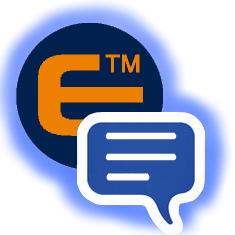What can I do with BASE0010
From IGEP - ISEE Wiki
Redirect to:
If you have successfully completed the getting started guide for BASE0010, you can follow this first introduction about what can you do with this board:
|
[[Image:{{{Image}}}|100px|center|link={{{Community_MainPage}}}]] {{{Name}}}
|
How to get DVI output
By default the DVI is outputs 1024 x 768 @ 60Hz, so if your monitor support this resolution you'll see the desktop when board is up.
Unfortunately the capability to automatically set the display resolution to match your monitor isn't yet available. The simplest method to customize the display resolution is to set it using [[How do I edit my kernel command line | kernel command line]
The required arguments use the following pattern: omapfb.mode=<display>:<resolutionMR-bpp@refresh> omapdss.def_disp=<display> where:
For example:
omapdss.def_disp=dvi omapfb.mode=1024x768MR-16@60 omapdss.def_disp=dvi omapfb.mode=hd720-16@60
See also: How do I edit my kernel command line.
How to configure ethernet
There are two Ethernets on the BASE0010 board which can be used, for example if your access to the internet is via a route you can configure one of them with following command:
ifconfig eth0 up udhcpc -i eth0
For second interface just change the eth0 device for eth1
How to get sound out (audio out)
The amplifiers for the headset output are disabled by default, so the first thing you'll do is enable these amplifiers with
amixer set -D hw:0 'Headset' 0dB amixer set -D hw:0 'HeadsetL Mixer AudioL2' on amixer set -D hw:0 'HeadsetR Mixer AudioR2' on
Then you can easily play a wav sound, for example
aplay sample.wav
How to get sound in (audio in)
You can record audio in with
arecord -t wav -c 2 -r 44100 -f S16_LE -v audio-in.wav
Following output is expected on console
Recording WAVE 'audio-in.wav' : Signed 16 bit Little Endian, Rate 44100 Hz, Stereo Plug PCM: Hardware PCM card 0 'TWL4030' device 0 subdevice 0 Its setup is: stream : CAPTURE access : RW_INTERLEAVED format : S16_LE subformat : STD channels : 2 rate : 44100 exact rate : 44100 (44100/1) msbits : 16 buffer_size : 32768 period_size : 2048 period_time : 46439 tick_time : 7812 tstamp_mode : NONE period_step : 1 sleep_min : 0 avail_min : 2048 xfer_align : 2048 start_threshold : 1 stop_threshold : 32768 silence_threshold: 0 silence_size : 0 boundary : 1073741824
When ever you think you want to stop just press CONTRL+C
How to get user button
There is one button on the BASE0010 board which can be used by the software for user interaction.
The kernel driver creates a device in /dev/input directory. To access to the button you will use the Linux Input Device subsystem. In Particular evdev, which is a generic input event interface. It passes the events generated in the kernel straight to the program, with timestamps. The event codes are the same on all architectures and are hardware independent.
For example, the test program evtest (evtest.c) listens on the /dev/input/event0 file descriptor, trying to read any events
evtest /dev/input/event0
Input driver version is 1.0.0 Input device ID: bus 0x19 vendor 0x1 product 0x1 version 0x100 Input device name: "gpio-keys" Supported events: Event type 0 (Sync) Event type 1 (Key) Event code 276 (ExtraBtn) Testing ... (interrupt to exit)
If you'll press the button you'll see
Event: time 8354.388305, type 1 (Key), code 276 (ExtraBtn), value 0 Event: time 8354.388335, -------------- Report Sync ------------ Event: time 8354.573364, type 1 (Key), code 276 (ExtraBtn), value 1 Event: time 8354.573364, -------------- Report Sync ------------
For more information please read:
- linux-2.6/Documentation/input/input.txt
- linux-2.6/Documentation/input/input-programming.txt
You have successfully completed this chapter of the guide.
|

|
If you have any question, don't ask to ask at the IGEP Community Forum or the IGEP Community Chat | 
|


